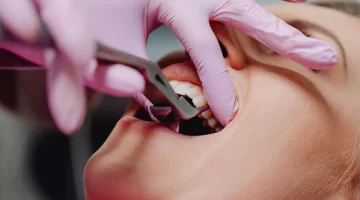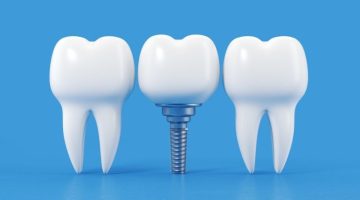Tooth extraction is a common dental procedure, but like any surgical treatment, it requires proper care and time to heal. If you’re preparing for a tooth extraction or have recently undergone the procedure, understanding the recovery process is essential for ensuring a smooth and quick healing period.
While the recovery time can vary depending on factors such as the complexity of the extraction and individual health conditions, most patients can expect the initial recovery to take about one to two weeks. During this period, you’ll focus on managing pain, reducing swelling, and preventing infection. However, full recovery can take several months, particularly if the tooth was deeply rooted or if there are complications such as bone grafting. In this blog, we’ll explore the different stages of recovery after tooth extraction, from the immediate post-op care to long-term healing, and share tips for minimizing discomfort and ensuring a smooth recovery process.
The First 24 Hours After Tooth Extraction: Expectations and Considerations
The first 24 hours after a tooth extraction are crucial for ensuring a smooth recovery. Immediately following the procedure, you’ll likely experience some bleeding, swelling, and discomfort. Your dentist will place a gauze pad over the extraction site to help control the bleeding. It’s important to bite down gently on the gauze to apply pressure and allow a blood clot to form, which helps in the healing process and prevents further bleeding.
During this initial period, it’s essential to avoid disturbing the clot, as this can lead to a painful condition known as dry socket. To prevent this, refrain from sucking, spitting, or using a straw. Swelling is common and can be minimized by applying a cold compress to the outside of your face near the extraction site for 15-20 minutes at a time.
Pain is typically managed with prescribed or over-the-counter pain relievers, but you may also experience some discomfort as the anesthesia wears off. Make sure to follow your dentist’s instructions regarding medication and care. Also, keep your head elevated, even while sleeping, to help reduce swelling.
Avoid hot foods, hard or crunchy items, and alcohol during the first 24 hours, as they can irritate the wound or slow the healing process. Staying hydrated and sticking to soft foods like yogurt or soups will help you recover more comfortably.
The First 24 Hours After Tooth Extraction: Expectations and Considerations
The first 24 hours after a tooth extraction are crucial for ensuring a smooth recovery. Immediately following the procedure, you’ll likely experience some bleeding, swelling, and discomfort. Your dentist will place a gauze pad over the extraction site to help control the bleeding. It’s important to bite down gently on the gauze to apply pressure and allow a blood clot to form, which helps in the healing process and prevents further bleeding.
During this initial period, it’s essential to avoid disturbing the clot, as this can lead to a painful condition known as dry socket. To prevent this, refrain from sucking, spitting, or using a straw. Swelling is common and can be minimized by applying a cold compress to the outside of your face near the extraction site for 15-20 minutes at a time.
Pain is typically managed with prescribed or over-the-counter pain relievers, but you may also experience some discomfort as the anesthesia wears off. Make sure to follow your dentist’s instructions regarding medication and care. Also, keep your head elevated, even while sleeping, to help reduce swelling.
Avoid hot foods, hard or crunchy items, and alcohol during the first 24 hours, as they can irritate the wound or slow the healing process. Staying hydrated and sticking to soft foods like yogurt or soups will help you recover more comfortably.
The Recovery Process: When Can You Go Back to Normal Life After Tooth Extraction?
The recovery process after a tooth extraction varies depending on the complexity of the procedure and your individual healing ability. Generally, the initial healing period takes about 1 to 2 weeks, but it may take several months for the bone and gum to fully heal. During the first few days, you should focus on following post-extraction care instructions, such as avoiding hard foods, refraining from smoking, and using pain medication as prescribed.
After the first 24 to 48 hours, the swelling and bleeding should begin to subside, and you can typically resume most daily activities. However, it’s important to avoid strenuous physical activities, such as exercising or lifting heavy objects, for about 5 to 7 days to prevent complications like increased swelling or bleeding.
By the end of the first week, many people feel comfortable resuming their normal routine, but you should still be cautious with eating and cleaning the extraction site. For more complex extractions, such as wisdom teeth removal, full recovery may take a few weeks. It’s also essential to attend any follow-up appointments with your dentist to ensure the healing process is progressing as expected.
For those with an active lifestyle, you can generally return to work or school within a few days, but activities that put pressure on your mouth, such as intense physical exercise or swimming, should be avoided until fully healed. Always listen to your body and consult your dentist if any unusual symptoms arise during the recovery period.
Tips for Relief and Pain Management After Tooth Extraction
After a tooth extraction, proper recovery is key to minimizing discomfort and ensuring a smooth healing process. The first few days are critical, and it is important to follow your dentist’s aftercare instructions closely. This includes keeping the extraction site clean, avoiding strenuous activities, and refraining from smoking, which can hinder the healing process. Ice packs can help reduce swelling during the first 24 to 48 hours, while over-the-counter pain relievers or prescribed medications can alleviate discomfort. Soft foods should be eaten to avoid irritation of the extraction site, and drinking through a straw should be avoided to prevent dislodging the blood clot. It’s also crucial to rest and stay hydrated to promote healing.
Home Care Methods to Accelerate Recovery
To accelerate recovery after a tooth extraction, home care is essential. First, follow your dentist’s instructions regarding oral hygiene; gently rinse your mouth with warm saltwater after the first 24 hours to keep the extraction site clean and prevent infection. Avoid brushing the area directly for the first few days. Applying ice packs to your face for 15-20 minutes at a time during the first 48 hours can help reduce swelling and discomfort. Eating soft, cool foods like yogurt, mashed potatoes, and smoothies will prevent irritation while promoting healing. Rest is crucial, so avoid strenuous activities that could increase bleeding or swelling. Stay hydrated and avoid smoking or using straws, as these can disrupt the blood clot and delay healing. With proper care, you can ensure a faster, smoother recovery process.












Leave a Reply